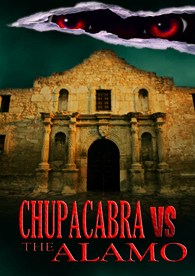 Name: Megalania, Giant Ripper Lizard.
Name: Megalania, Giant Ripper Lizard.Size: Estimates from remains mark the creature anywhere between 4.5 to 7 meters in length (15 to 23 feet.)
Appearance: This is effectively, a monitor lizard, similar to the Komodo Dragon and probably looks much the same, only much, much bigger.
Threat: High. This is a predator. No if's, ands, or buts. It WILL track you, catch you, kill you, and eat you.
This isn't just an animal which people have caught glimpses of, and which MIGHT be out there. We know for a fact, this creature used to be there and in fairly significant numbers. The real question is whether or not the animal is actually extinct like the Australian government would probably like us to believe. (Disclaimer: I am not a hardcore conspiracy theorist. Unless it comes to aliens and UFO's.) Though, why they would think something like this would scare people away after everything else Australia has to offer, is beyond me.
 Taxonomy, the science of classifying animals, puts Megalania in the same group of animals as the Komodo Dragons, and, if this is accurate, indicates that on top of being a 30 foot long, 2-ton lizard, it was probably poisonous as well. Why a 30-foot, 2-ton lizard needs to be poisonous, I don't know.
Taxonomy, the science of classifying animals, puts Megalania in the same group of animals as the Komodo Dragons, and, if this is accurate, indicates that on top of being a 30 foot long, 2-ton lizard, it was probably poisonous as well. Why a 30-foot, 2-ton lizard needs to be poisonous, I don't know.Of all the creatures I'm going to go over this month, this one probably has the best and most direct evidence for it's existence. For a start, we know it used to exist already. We know this is a real animal. In 1979, a farmer in Central Queensland, Australia, discovered a collection of bones in a corner of his property. Upon taking them to the University of Brisbane, they were identified as Megalania bones. That was quite a find in and of itself already, but the real kicker was when the bones were dated. It was determined that the bones were actually only 300 years old! Merely the blink of an eye in geologic time and almost a thousand years after Megalania was thought to have been extinct.
In addition to fairly recent remains, footprints have been found, and sightings have even been made by respected scientists as in the case of Herpetologist Frank Gordon. There are even some aboriginal tribes who insist that even to this day, they know of, respect, and fear these monstrous creatures, claiming sounds in the jungles where they live are made by them.
Surprisingly, there aren't many stories which include the Megalania in their work, as a monster or even as a creature of interest. The Animal Planet series Lost Tapes, included an episode based on Megalania called "Devil Dragon" where we never actually see the animal, only the dumb guy who got bit being dragged off camera into the scrub. As well, the animal was featured in an episode of the History channel's Monsterquest. The sad fact of the matter is that despite Megalania's fearsome size, power, and poisonous bite, it just doesn't compare to the awe inspired by Tyrannosaurus Rex, or the small, deadly quickness of Velociraptor. While some people don't like any kind of reptile, most people aren't going to be afraid of an over-sized lizard. Even if it is the size of a bus.
So. I'm packed. Anyone else want to head down under?
~ Shaun
.JPG)








